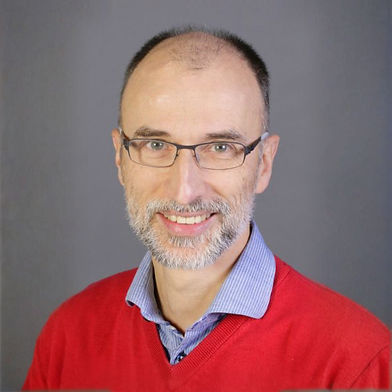Dr. Gregor Langen
Group Leader
Education
since 2014
Group Leader position in the AG Zuccaro, Institute for Plant Sciences, University of Cologne, Germany
1998 - 2014
Group Leader at the Institute of Phytopathology and Applied Zoology, Justus Liebig University, Giessen, Germany. Immunity of plants with focus on fungal pathogen recognition and signal transduction in barley and Arabidopsis
1995 - 1998
Postdoctoral Research Fellow at Bayer Crop Science, Monheim, Germany. Topic of the research project "Genetically engineered broad-spectrum plant resistance to tospoviruses"
1995
Doctorate (Dr. rer. nat.). Thesis title "Molecular recognition of stem rust in wheat" ("Summa Cum Laude" = with the highest honour)
1991 - 1994
PhD student at the RWTH Aachen University, Germany (Plant Physiology and Phytopathology)
1991
Diploma in Plant Physiology
1984 - 1991
Study of Biology at the RWTH Aachen University, Germany
Research: Genomics and transcriptomics
Gregor Langen is interested in knowing how fungal root endophytes help crop plants to sustain stress caused for example by fungal pathogens. His work aims to characterize the molecular mechanism underlying the fungal beneficial effects of Serendipitaceae (Sebacinales, Agaricomycotina) in monocotyledonous crop plants and the model plant Arabidopsis.
The availability of the genomes of Serendipita indica and S. vermifera, together with those of multiple additional endophytes, ECM, orchid and arbuscular mycorrhizal fungi publicly available at the JGI portal and at the NCBI makes it possible to pinpoint the polyphyletic adaptation to a root symbiotic lifestyle. It is based on convergent loss of ancestral saprotrophic characters in ECM fungi on the one hand and on their maintenance and reinforcement in endophytic Serendipitaceae, as in other ericoid or orchid mycorrhizal fungi on the other hand. However, most of the many mycorrhizal types described in Sebacinales, such as ECM, ericoid or orchid mycorrhizal species, apparently obligate biotrophic due to their uncultivability, are not yet sequenced. Their genome sequence (e.g., obtained from environmental samples) would aid in the analyses of synteny and identification of coding genes and gene families that have expanded in the species depending on their lifestyles. This would help understanding the transition from endophytic to purely mycorrhizal lifestyle, a major evolution that repeatedly occurred in fungi and that can be best studied in Sebacinales. Our efforts currently point toward that direction.

Contact
+49 (0) 221 470-1551